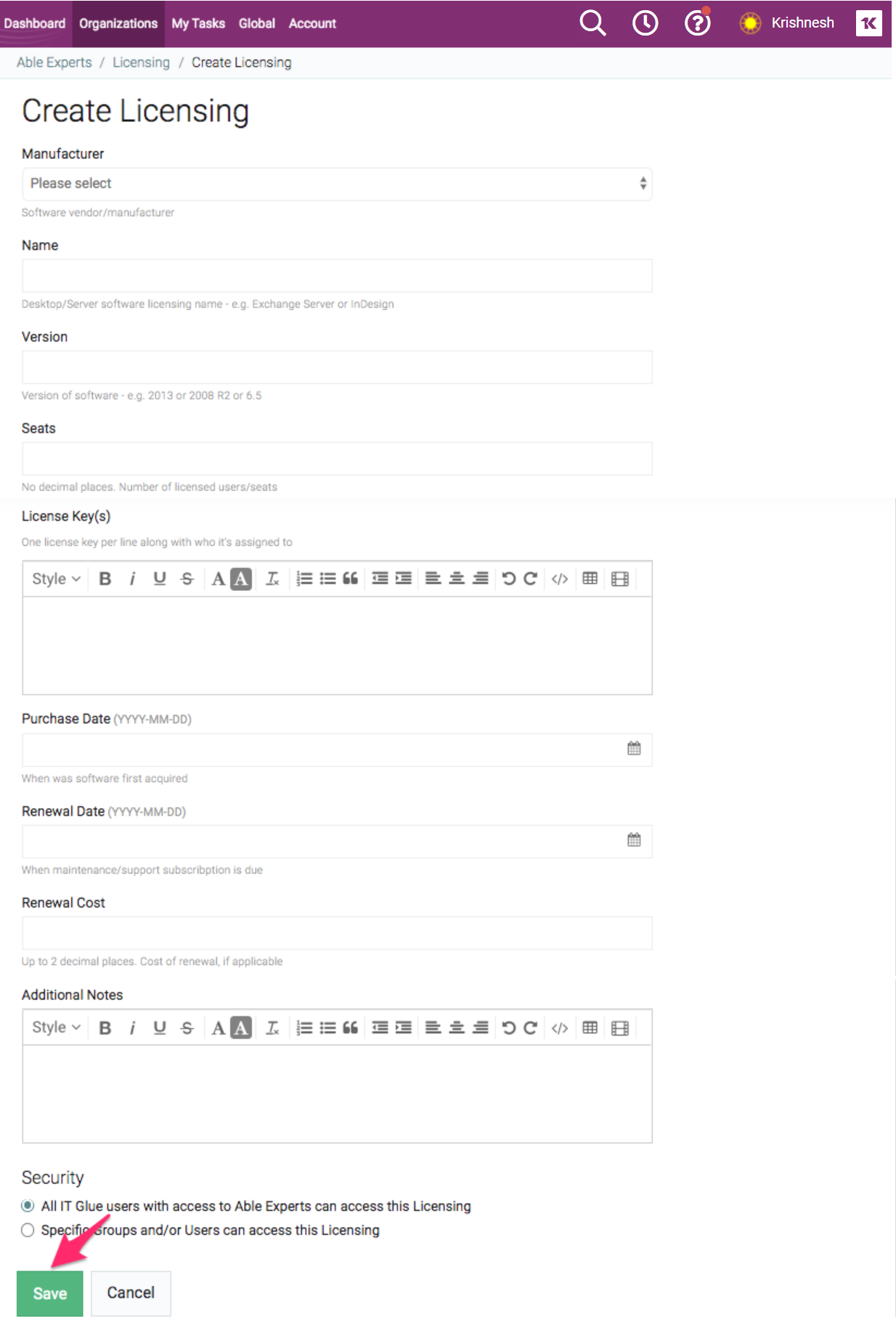Licensing
The Licensing flexible asset is used to capture software licensing information from individual software instances to volume site licenses. Licensing information will be linked in multiple places, so capturing it early is strongly recommended.
Preparation
- Load the network attached devices in the client environment as configurations.
- Make sure you have access to all virtual and physical locations and the relevant web credentials.
Instructions
Create one entry for every technology you discover. Refer to existing repositories (physical and virtual) and ask the key site contacts.
- Navigate to the organization that the license belongs to.
- Click on Licensing in the left sidebar and then on the + New button in the top-right corner.
- In the Create Licensing screen, complete each of the below fields:
- Manufacturer - Tag the manufacturer.
- Name - Enter a descriptive name that will be easy to find in search or in list view.
- Version - Enter the version of software.
- Seats - Enter the number of licensed users/seats.
- License Key(s) - Enter one license key for each assignee.
- Purchase & Renewal Dates - Dates when software was acquired and when subscription is due.
- Renewal Costs - Cost of renewal, if applicable.
NOTE In the original template design, the Manufacturer, Name, and Version are merged to produce the title. For example, if Microsoft is the manufacturer, Office Pro is the name, and 2013 is the version, this will produce an entry entitled Microsoft Office Pro 2013.

- Click Save.
- In the Related Items section of the right side pane, tag the vendor that is related to the current licensing entry. If necessary, revisit the Vendors area to create the vendor in your account.
- In the Attachments section, you can tag emails, pdfs, and licensing agreements.
Checklist
The following checklist can help, but of course licensing will vary considerably from client to client:
- Microsoft
- Apple
- VMware
- Citrix
- Adobe
- Finance
- CRM
- ERP
- Sales
- Hardware
- Firewalls
- Line of Business Databases
- Cloud Apps
- Plug-Ins
- Security Solutions (Anti Spam, Anti Virus, Anti Malware)



